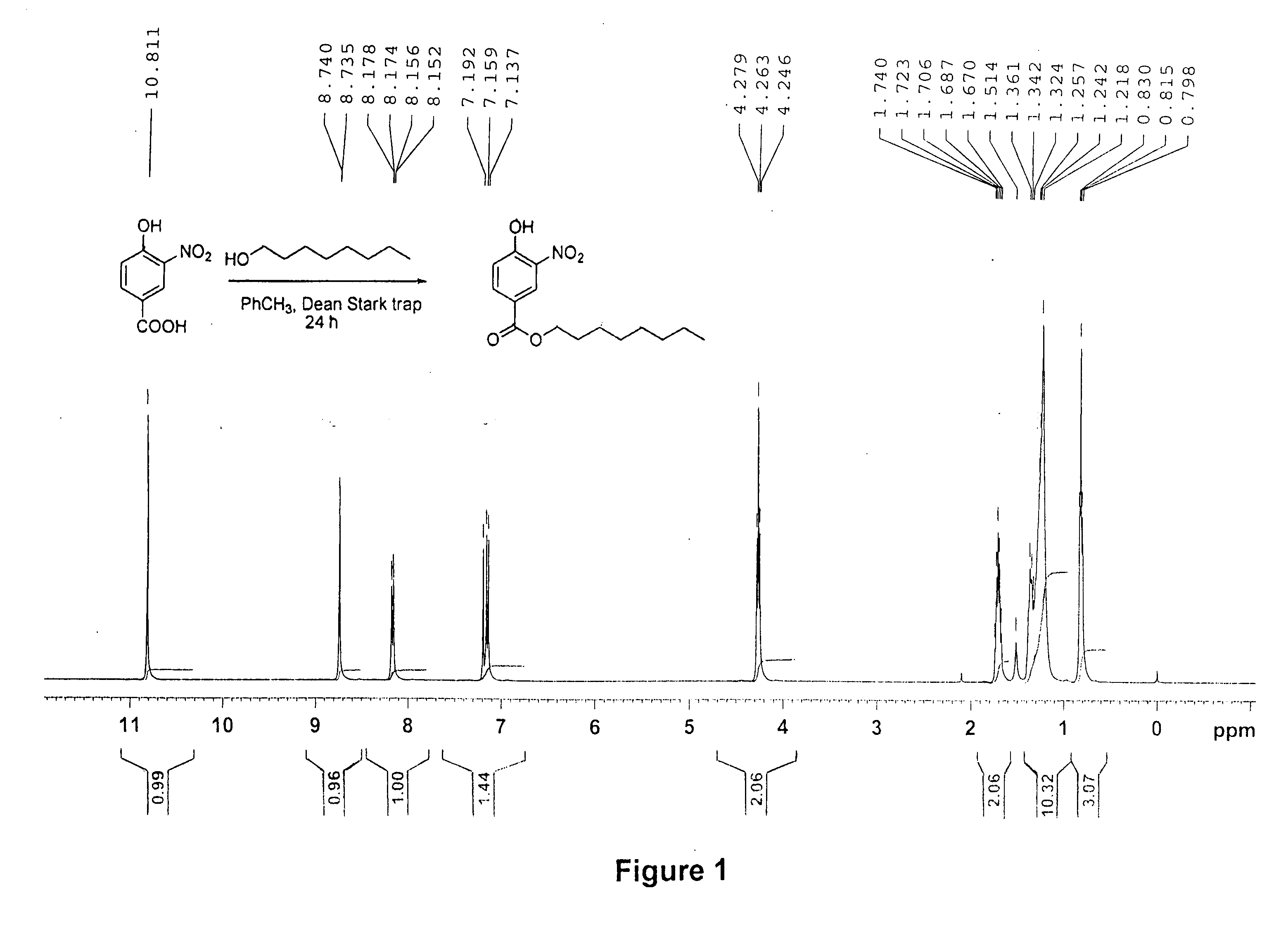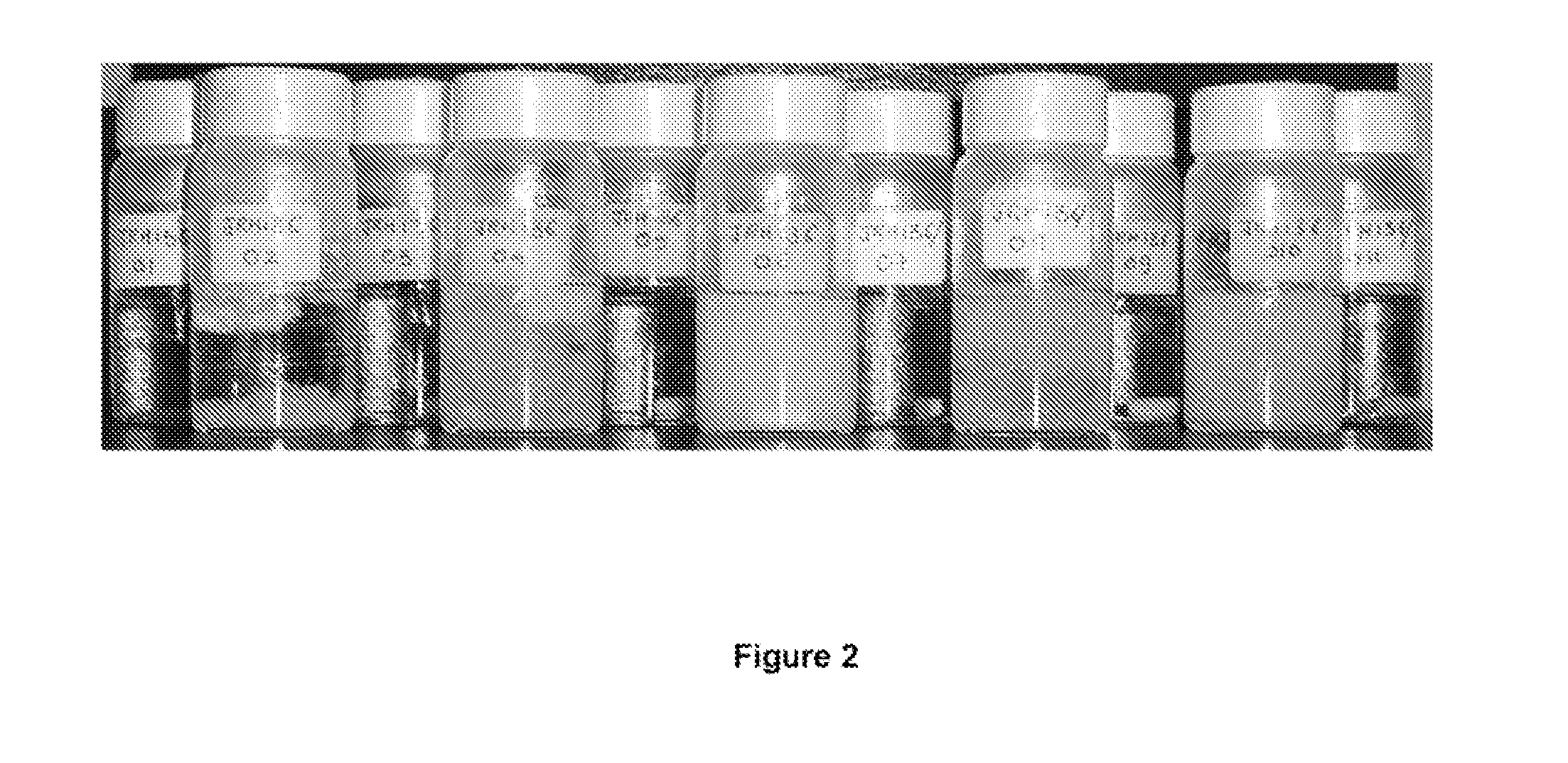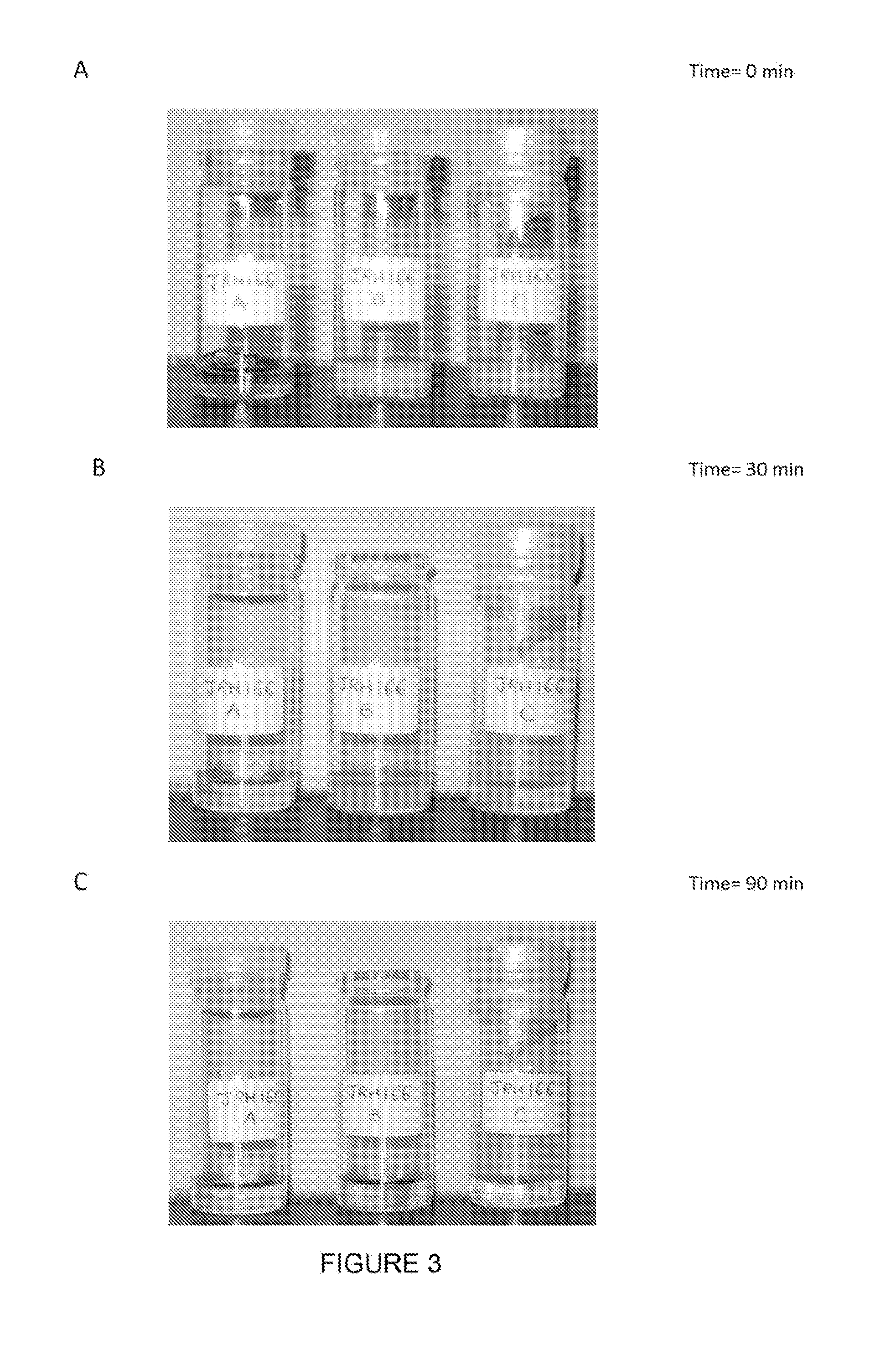Switchable Anionic Surfactants and Methods of Making and Using Same
a technology of anionic surfactants and switches, applied in the field of switches, can solve the problems of difficult removal of traditional non-switchable surfactants after use, difficult removal of surfactants from the surface, and huge amount of was
- Summary
- Abstract
- Description
- Claims
- Application Information
AI Technical Summary
Benefits of technology
Problems solved by technology
Method used
Image
Examples
working examples
Materials and Methods
[0083]CO2 (Praxair, SFC grade, 99.998%), argon (Praxair, 99.998%) and air (Praxair, extra-dry grade) were used as received. Unless otherwise noted, reagents were received from Aldrich (Oakville, Ontario, Canada).
[0084]To turn a surfactant OFF, CO2 gas was slowly bubbled for 5 min through the solution. To turn a surfactant ON, the solutions was heated to 70° C. for 40 min by immersing the reaction flask in an oil bath that was held at a constant temperature of 70° C. Unless otherwise specified, all vials were tightly capped using a screw cap, the gap between tightened cap and Vial was covered with PARAFILM™ to ensure that there was no leakage nor displacement of gases.
[0085]In certain examples herein, when the added base was NaHCO3, instead of adding NaHCO3 to the solution directly, it was formed in situ by adding Na2CO3 to the aqueous solution, which Na2CO3 in the presence of CO2 converts to NaHCO3.
[0086]Unless otherwise specified, water that was used in studies...
example 1
Synthesis of n-octyl 4-hydroxy-3-nitrobenzoate (1N)
[0087]A mixture of 4-hydroxy-3-nitrobenzoic acid (5.00 g, 27.32 mmol), n-octanol (7.1 g, 8.62 mL, 54.64 mmol), para-toluenesutfonic acid (0.050 g) and toluene (200 mL) were refluxed for 24 h under a Dean-Stark trap to remove water by azeotropic distillation. After completion of the reaction, toluene was evaporated under reduced pressure. The residue was diluted with wet diethyl ether (400 mL) and a solution of potassium hydroxide (2.00 g, 35 mmol) in ethanol (95%, 40 mL) was added. A dark orange solid was obtained. The solid was filtered through a scintered glass filter, washed with diethyl ether (2×20 mL) and dried by exposure to air. The crude product was added to a cold aqueous solution (200 mL of water) that was then gradually acidified with concentrated hydrochloric acid until the solution was acidic (by pH paper). An oily liquid formed that solidified when cooled (n-octyl 4-hydroxy-3-nitrobenzoate, (1N)). Yield 87%. UV: λmax=2...
example 2
Switching Efficiency of Compounds (1A) and (1N) as Determined by 1H NMR Spectroscopic Studies
[0088]The following study confirmed that compounds (1A) and (1N) reversibly convert from the neutral form (1N) to the anionic form (1A) and back to the neutral form over and over again with substantially no loss of product. The conversion was verified visually since the neutral form was not soluble in aqueous solution and appeared as a white precipitate in colourless liquid while the anionic form was fully soluble in aqueous solution and appeared as a clear yellow liquid (see FIG. 2). In addition to visual examination, 1H NMR studies that are described below confirmed the presence of the hydroxyl proton in the spectra of the neutral form.
[0089]Two methods were used for demonstrating the efficiency of the switching process, method A using [(CH3)4N]I and method B using dimethylformamide (DMF) as internal standards. In both methods, to quantify the concentration of surfactant in solution, its 1...
PUM
| Property | Measurement | Unit |
|---|---|---|
| pKa | aaaaa | aaaaa |
| pKa | aaaaa | aaaaa |
| pH | aaaaa | aaaaa |
Abstract
Description
Claims
Application Information
 Login to View More
Login to View More - R&D
- Intellectual Property
- Life Sciences
- Materials
- Tech Scout
- Unparalleled Data Quality
- Higher Quality Content
- 60% Fewer Hallucinations
Browse by: Latest US Patents, China's latest patents, Technical Efficacy Thesaurus, Application Domain, Technology Topic, Popular Technical Reports.
© 2025 PatSnap. All rights reserved.Legal|Privacy policy|Modern Slavery Act Transparency Statement|Sitemap|About US| Contact US: help@patsnap.com



